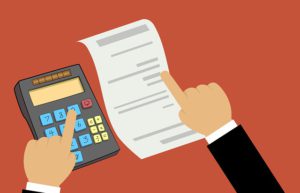Velocity banking without a HELOC is a useful concept. The “velocity debt reduction method,” is a financial strategy that aims to expedite debt payoff and achieve financial freedom without necessarily relying on a home equity line of credit (HELOC).
While HELOCs are commonly associated with velocity banking, some individuals seek alternative approaches to accelerate debt repayment without using this specific financial tool. In this article, we explore how velocity banking can be adapted for those without a HELOC.
 Understanding velocity banking:
Understanding velocity banking:
At its core, velocity banking is based on the concept of minimizing the average daily balance of debts to reduce interest charges and pay off debts more quickly. Traditionally, the strategy involves channeling income into a HELOC, using the line of credit to pay everyday expenses, and making additional payments towards high-interest debts.
Adapting velocity banking Without a HELOC:
While HELOCs offer certain advantages, not everyone has access to one or may prefer to avoid using home equity as collateral. However, the principles of velocity banking can still be applied effectively without a HELOC. Here’s how to adapt the strategy:
1. Utilize a Low-Interest Credit Card: Look for a credit card with a low-interest rate and favorable terms. While credit cards typically have higher interest rates than HELOCs, finding a low-rate credit card can still reduce interest charges.
2. Establish a Dedicated Account: Create a separate account (e.g., a high-yield savings account or a checking account) to act as a central hub for income and expenses. This dedicated account will serve as the primary tool for velocity banking.
3. Direct Income and Expenses: Direct all income directly into the dedicated account, just like with a HELOC. This helps reduce the average daily balance of the account and minimizes interest charges.
4. Pay Expenses with Credit Card: Use the low-interest credit card to pay for daily expenses. This temporarily increases the credit card balance but allows you to take advantage of the float period (time between purchase and payment due date) to earn interest on your income.
5. Make Additional Debt Payments: As your income accumulates in the dedicated account, you’ll have extra funds available to make additional payments toward high-interest debts, such as credit card balances or personal loans.
6. Repeat the Cycle: Continue the cycle each month, channeling income into the dedicated account, using the low-interest credit card for expenses, and making extra debt payments.
Also Read:
Velocity Banking: Using Credit Cards to Pay Debt
When does capital one report to credit bureaus?
Credit Repair Asap: How to get credit repair quickly
Credit cards without Annual Fees for Couples
 Benefits of Adapted velocity banking:
Benefits of Adapted velocity banking:
- Faster Debt Payoff: By consistently making extra payments towards high-interest debts, you can accelerate the debt payoff process.
- Interest Savings: Minimizing the average daily balance of debts can lead to potential interest savings over time.
- Flexibility: Adapting velocity banking without a HELOC provides flexibility in choosing financial tools that align with individual preferences and circumstances.
Important Considerations:
- Credit Card Discipline: Using a credit card for velocity banking requires financial discipline to avoid accumulating excessive credit card debt.
- Credit Card Interest Rates: Even with a low-rate credit card, interest rates are generally higher than HELOC rates. Consider the impact of interest charges when using this approach.
- Financial Management: Responsible financial management is crucial for any debt acceleration strategy. Stick to a budget and prioritize debt reduction.
 Velocity Banking with a Low Interest CC
Velocity Banking with a Low Interest CC
Velocity banking with a low-interest credit card involves leveraging the card’s favorable terms to accelerate debt payoff and reduce interest charges. While it may not yield the same benefits as a home equity line of credit (HELOC) due to higher interest rates, this approach can still be effective if managed responsibly. Here’s how to do velocity banking with a low-interest credit card:
1. Select a Low-Interest Credit Card: Start by choosing a credit card with a low-interest rate and reasonable terms. Look for cards that offer a low introductory rate or ongoing low interest for balance transfers and purchases.
2. Assess Your Debt and Finances: Review your debts, including credit card balances, personal loans, or other high-interest loans. Take stock of your monthly income and expenses to understand how much you can allocate towards debt repayment.
3. Create a Dedicated Account: Open a dedicated account, such as a high-yield savings account or a separate checking account, specifically for velocity banking. This account will serve as your financial hub for managing income and expenses.
4. Direct Income to the Dedicated Account: Channel all your income directly into the dedicated account. This helps reduce the average daily balance of the account and minimizes the interest charged on any outstanding balance.
 5. Use the Low-Interest Credit Card for Expenses: Instead of using a traditional checking account or debit card for daily expenses, use the low-interest credit card to pay for routine purchases, bills, and other expenditures.
5. Use the Low-Interest Credit Card for Expenses: Instead of using a traditional checking account or debit card for daily expenses, use the low-interest credit card to pay for routine purchases, bills, and other expenditures.
6. Make Extra Debt Payments: As your income accumulates in the dedicated account and your credit card balance remains low due to regular payments, you’ll have extra funds available. Use these funds to make additional payments towards high-interest debts.
7. Repeat the Cycle: Each month, continue the cycle by channeling income into the dedicated account, using the low-interest credit card for expenses, and making extra debt payments.
8. Monitor Your Progress: Regularly monitor your progress in reducing debt and track the interest savings resulting from the velocity banking strategy.
Conclusion
In conclusion, while velocity banking is often associated with HELOCs, the underlying principles can be adapted for individuals without a HELOC.
By utilizing a low-interest credit card and a dedicated account, borrowers can still implement a modified velocity banking strategy to expedite debt payoff and achieve their financial goals.
As with any financial strategy, thorough research, financial discipline, and careful planning are essential for success.